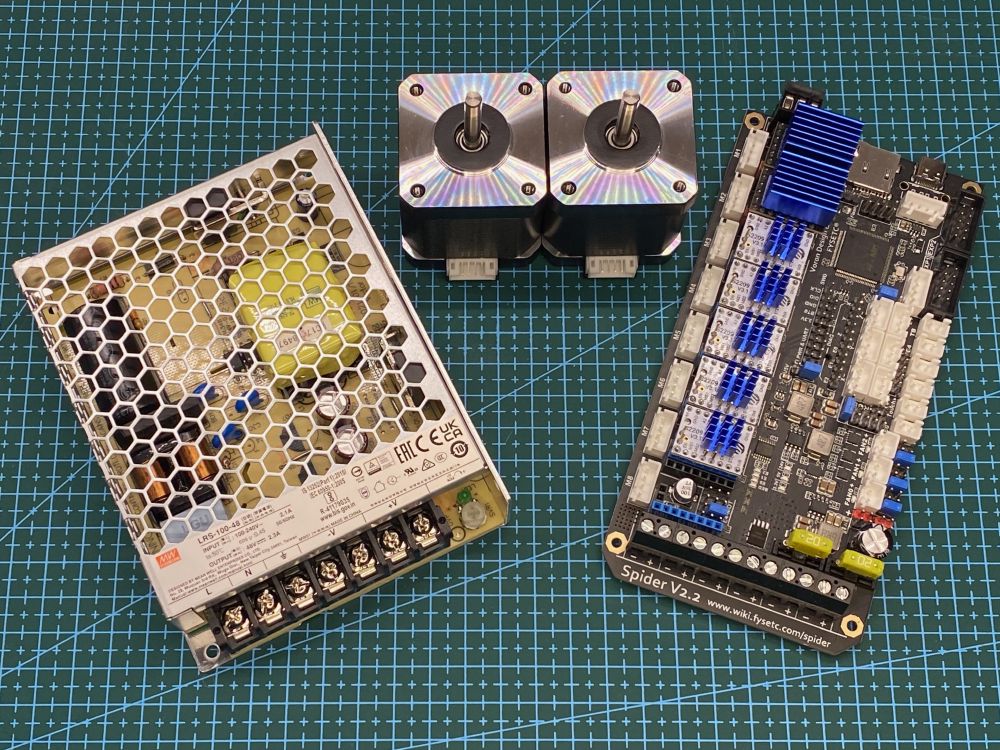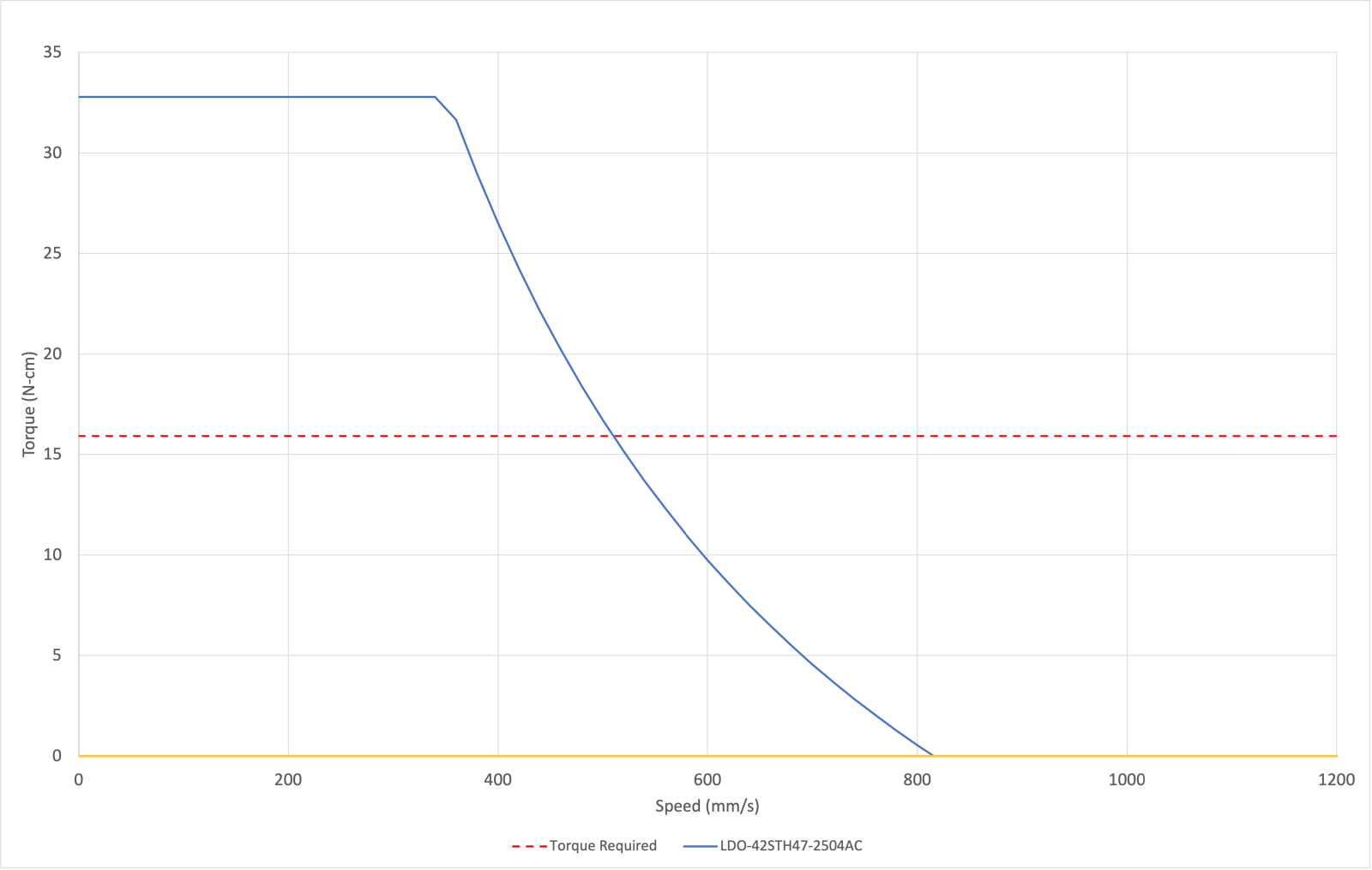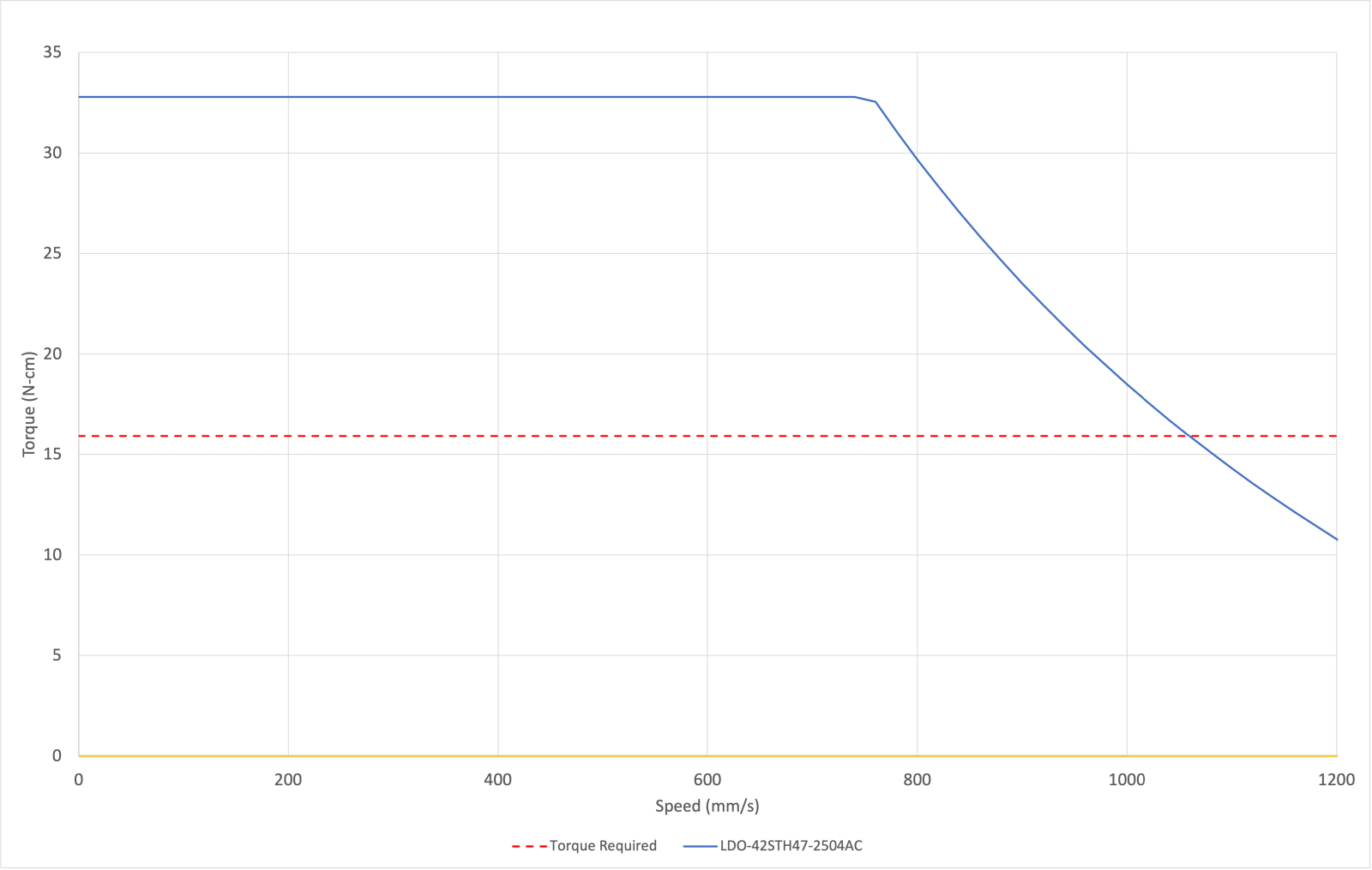Voron on 48V: How Fast Can It Go?

Recently, it has become a lot easier to run your Voron on 48V: the latest controller boards support voltages up to 60V and high voltage stepper drivers like TMC5160 are readily available. Does it mean the future of 3D printing is in 48V systems? Should you use 48V in your next build? I will push my 24V printer to find its limit and then test how much faster it can go on 48V.
I will be testing on my Voron 2.4 with LDO-42STH48-2504AC A/B steppers. I typically print at up to 10k acceleration and speeds up to 400mm/s, which is far from their limit. They are the motors for chasing speed records. Let’s look at their theoretical performance simulation at 50k acceleration:

Even at 50k acceleration, these motors should reach around 500mm/s on 24V. I used TEST_SPEED macro according to the instructions here and determined that my actual max speed at 50k acceleration (with TMC5160s at 1.5A run current) was around 300mm/s. I only run at 60% of peak motor current for reliability and my toolhead is probably heavier than I entered in the simultion which would explain the lower performance in the real-life test. As you can see, the performance on 24V is more than adequate, even at such high acceleration. If we rerun the simulation at 48V, we find that our maximum speed would be over 1000mm/s. Given the theoretical performance doubled, we can expect that we will see a doubling in real-life performance, and the TEST_SPEED macro should hit around 600mm/s when running on 48V.

Running on 48V
In order to run on 48V, you will need a controller board that has a separate high voltage input for motors, for example BTT Octopus Pro ($60) or FYSETC Spider 2.2 ($45). You will also need TMC5160 Pro high voltage stepper drivers ($20/each). You don’t need to run all the steppers at 48V, just the A/B motors for the X/Y axis. Finally, you need an additional 48V power supply like Mean Well LRS-100-48 ($20).
I installed the components on my Voron 2.4 and reran TEST_SPEED tests. As expected, I got a reliable performance at 600mm/s. I could reach more by increasing the current and/or reducing the weight of the toolhead. However, I’m satisfied with the results at this point.
TODO: Upload a video running on 48V to YouTube
24V or 48V?
In short: 24V is plenty. Accelerations and speeds at which you would need a 48V system will produce poor print quality and reduce the lifetime of motion components (like idler bearings). However, I will keep experimenting with 48V on one of my printers. I plan to move this 48V setup to a future fixed gantry printer which I believe will handle higher accelerations better.
Disclaimer: Thanks to FYSETC for providing the Spider board, Caribou3d and LDO for the stepper motors for this test.